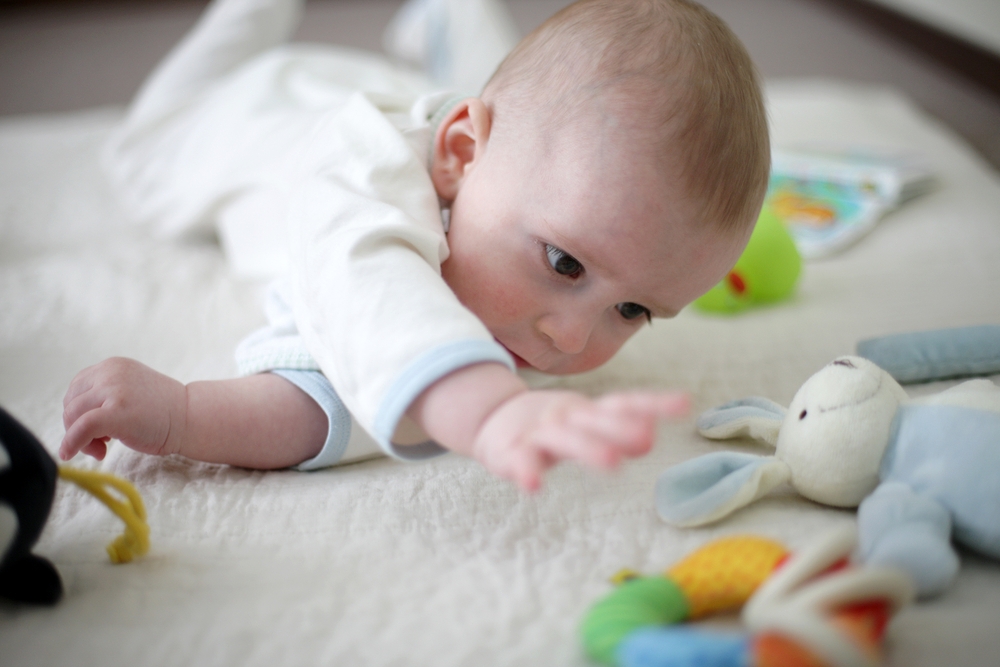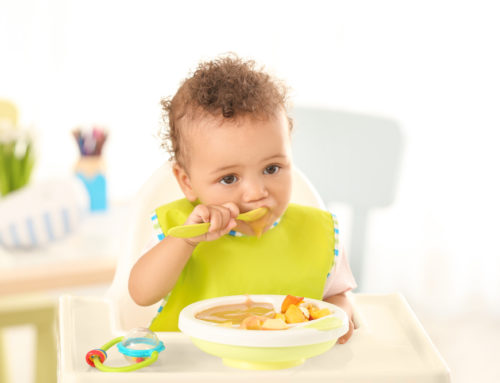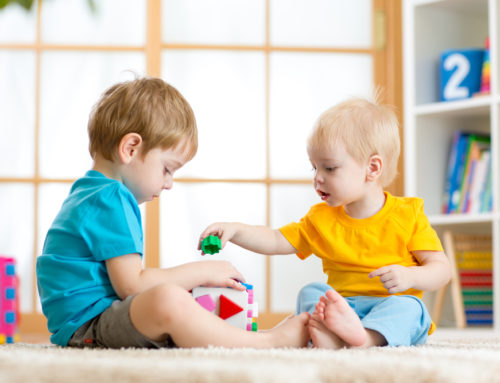_x000D_
As the famous educator Maria Montessori once said, “Play is the work of a child.” And this is one job that can begin as early as infancy. Not only does play benefit a child’s cognitive and physical abilities, but it also contributes to their social and emotional well-being. “Play has even been shown to be important for healthy brain development,” says Melissa McInnis Brown, assistant professor of early childhood development and education at Texas Woman’s University. “Through play, babies and toddlers are able to garner new skills and learn about relationships with other people.”
To help make sense of how to play with your baby and what to look for when considering the best types of toys for each stage of the first year, consider these tips from early childhood experts.
In the Beginning: 0-3 months
It’s never too early for your baby to play, and the first three months of life present their own opportunities for amusement—and that includes you. “Infants during this stage begin to show interest in the people around them,” says Brown. “They enjoy looking and listening.” This stage is typically when your baby will smile, laugh and make cooing noises in response to seeing familiar faces.
As babies reach the end of their third month, they make begin to understand the idea of cause and effect. “Toys that allow for contingent responses—for instance, a mobile that only moves when a baby kicks it—help infants develop this concept,” notes Brown. “Engaging with toys and accidentally making it respond—for instance, making a toy squeak or rattle—help infants understand what their hands are doing.” Other toys that are useful during this developmental stage include car seat and stroller toys with varying textures, shapes and colors and activity mats/gyms.
Get a Grip: 3-6 months
As babies develop and grow, so do their fine motor skills. According to the “Stages of Play” report from ZERO TO THREE, an organization devoted to infant and toddler wellness, this is generally the period when your child is able to focus on an object and move her in hand in that direction to grasp it: “This is how hand-eye coordination develops. Soon your baby will be transferring toys or other small objects from one hand to the other (sometimes pausing to mouth them a bit.” Toys that help benefit this stage include brightly colored and textured rattles and toys that light up or make music.
Also during this age range, consider encouraging your baby to play while on their belly. “Tummy time is crucial to normal motor development,” says Christine Wallin, an early interventionist (eipcares.com). “Without tummy time, infants often have delayed motor skills, which then impacts cognitive development.” Toys to help promote tummy time include baby-safe mirrors and board or soft activity books.
Figuring it Out: 6-9 months
Becoming more curious as they surpass their first six months, older babies are learning about the world around them as they play. “Like ‘little scientists,’ they want to investigate anything and everything they can get their hands (or mouths) on,” says Brown. “The main question driving their play is ‘What will happen if…’ They are learning that they can make things happen in the world.” This is often when the concept of object permanence comes into play, a concept that can be enhanced with shape sorters and stacking toys.
Gross motor skills are also sharpened during this developmental stage as babies get a full workout by rolling, crawling and, in some cases, cruising. “These new physical skills, while perhaps unnerving for you, are exciting for your baby because they offer freedom to try new ways of moving and playing,” states ZERO TO THREE. Playthings that can be pushed or pulled, such as a chunky-sized car or truck, and toys that promote standing or cruising like a toy shopping cart or activity walker, help boost these physical skills.
Mastering Play: 9-12 Months
As your baby approaches his first birthday, you will marvel over all that he has accomplished in these last twelve months. Don’t be surprised, of course, if you find yourself playing peek-a-boo on repeat or helping build with blocks…only to start all over again. In fact, say the experts, allowing opportunities for repetition is essential to healthy development. “Although parents might find repeating the same things over and over to be quite boring…it is through repetition that children are able to practice and master a challenge,” says Brown.
To mix things up a bit, offer your child a new object to explore each week. “Provide opportunities for babies to dump and fill baskets or tubs,” suggests Brown. “Keep an eye out for items that have lids that open and close, so babies can take them off, explore their contents and put them back on.”
And as tempting as it may be to guide your soon-to-be toddler on how to play, remember to give them their own space. “Free, child-driven play is often when the magic happens,” says Brown. “Although guided interactions with mom and dad are incredible fun and important, babies do need some time to take the lead and let their own curiosities direct their play.”
_x000D_
_x000D_




